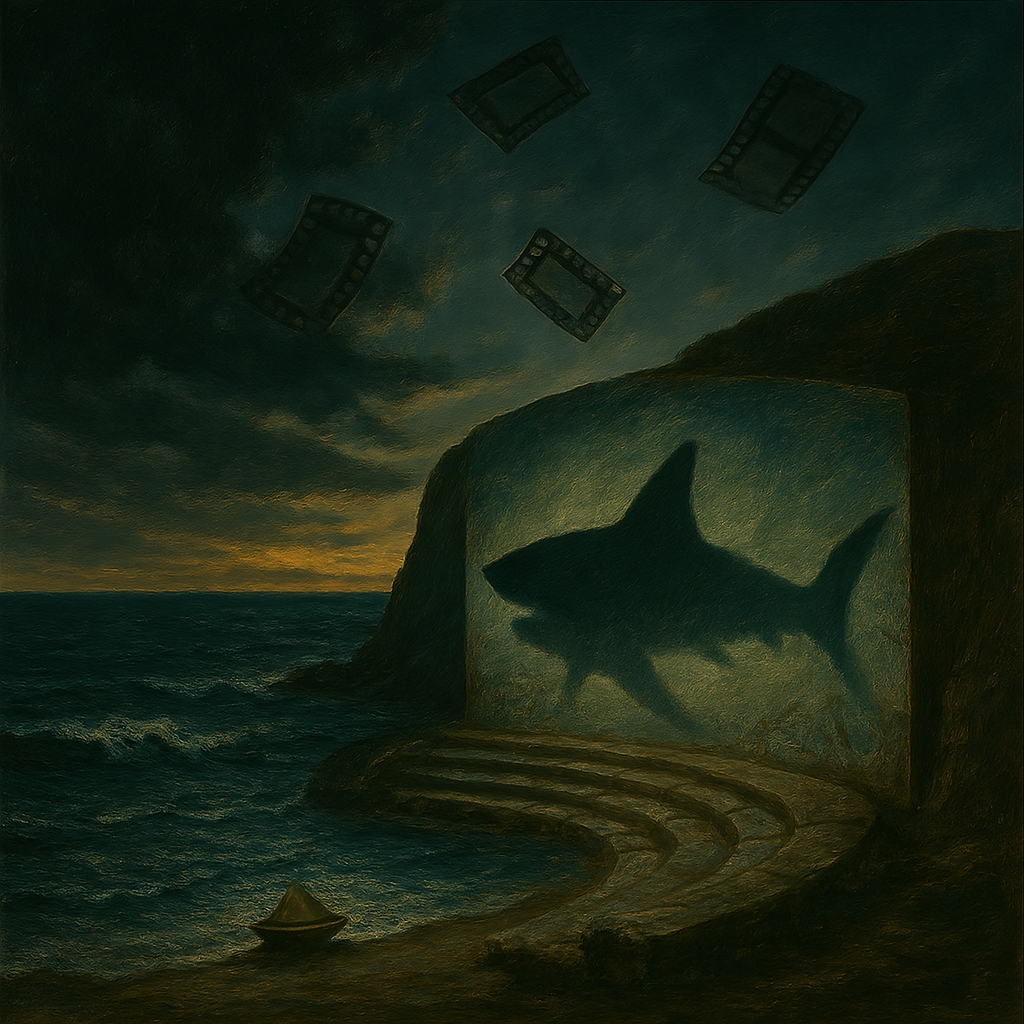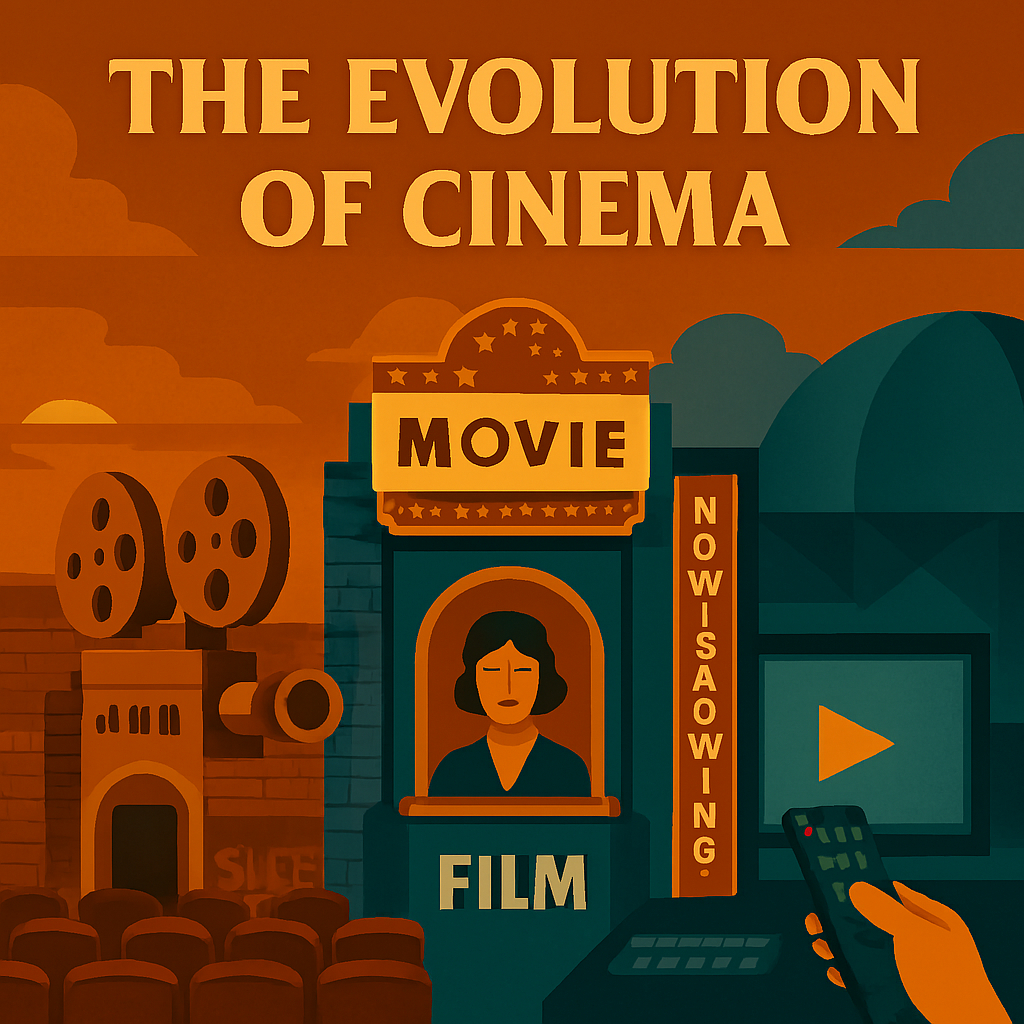How Charlie Chaplin Reshaped Cinema and Why His Influence Still Echoes Today
Charlie Chaplin
Charlie Chaplin transformed cinema into a medium of emotional clarity, symbolic storytelling, and global resonance. Born in London in 1889, he rose from poverty to become one of the most influential figures in film history. His work bridged the gap between slapstick comedy and emotional realism, introducing audiences to characters who were vulnerable, resilient, and deeply human. At a time when movies were silent and often simplistic, Chaplin infused his films with social critique, psychological depth, and narrative sophistication. His iconic Tramp character became a universal symbol of dignity in the face of hardship.
Chaplin’s mastery of physical timing, facial expression, and visual rhythm redefined screen performance. He pioneered creative control, composing his own scores, directing his own films, and shaping every detail of production. His influence extended across continents, inspiring filmmakers in Japan, India, France, and beyond. Chaplin’s legacy is not confined to the silent era. It continues to shape animation, satire, and emotionally layered storytelling today. His films remain relevant because they speak to timeless human experiences—poverty, love, injustice, and hope. Chaplin didn’t just make people laugh. He taught cinema how to feel.

Chaplin’s Entry into Film – A New Kind of Performer
Charlie Chaplin entered the film industry in 1913 through Keystone Studios, bringing with him a background in British vaudeville and pantomime. His early performances introduced a level of emotional nuance and rhythmic timing that was absent from most silent film acting at the time. Unlike the exaggerated gestures common in early cinema, Chaplin’s movements were fluid, expressive, and psychologically grounded. His debut in “Making a Living” was quickly followed by “Kid Auto Races at Venice,” which introduced the Tramp—a character that would become globally iconic. Chaplin’s ability to convey complex emotions without dialogue set a new standard for screen performance.
He used physical comedy not just for laughs but to express frustration, joy, and vulnerability. Audiences responded to his emotional range, not just his slapstick. Chaplin’s expressive face and body language redefined silent film acting. He quickly became one of the most recognizable figures in cinema. His early success proved that film could carry emotional weight without sound. Chaplin’s timing and improvisation set a new benchmark for screen comedy. He elevated the actor’s role from spectacle to storyteller. His entry marked a turning point in how film could communicate emotion. Chaplin’s performances were not just entertaining—they were emotionally architectural.
Table – Performance Style Before and After Chaplin
| Feature | Pre-Chaplin Silent Film | Chaplin’s Approach |
|---|---|---|
| Gesture style | Exaggerated and rigid | Fluid and emotionally layered |
| Facial expression | Minimal nuance | Highly expressive and subtle |
| Character depth | Flat archetypes | Complex emotional personas |
| Audience connection | Visual spectacle | Empathy and identification |
| Comedy pacing | Mechanical timing | Organic, rhythmic timing |
The Tramp – A Universal Character of Emotional Depth
Charlie Chaplin’s most iconic creation, the Tramp, first appeared in 1914 and quickly became a global symbol of resilience, mischief, and dignity. Dressed in oversized shoes, a bowler hat, and a tight-fitting coat, the Tramp was visually distinct yet emotionally universal. He represented the underdog—poor, kind-hearted, and perpetually caught between chaos and compassion. Chaplin used the Tramp to explore themes of poverty, injustice, and emotional survival without relying on dialogue. The character’s silent expressiveness allowed audiences across cultures to connect with his struggles and triumphs.
The Tramp was not a static figure; he evolved emotionally across films, showing vulnerability, romantic longing, and moral courage. Chaplin maintained continuity in the Tramp’s visual identity while deepening his emotional complexity. The character often disrupted systems of power, mocked elites, and protected the vulnerable. He was both comic and tragic, balancing slapstick with pathos in a way that few characters ever achieved. The Tramp’s walk, gestures, and facial expressions became part of cinematic vocabulary.
His presence in over 70 short and feature-length films established him as one of the most enduring characters in film history. Chaplin’s ability to build empathy through silence made the Tramp a symbol of emotional literacy. The character’s universality helped Chaplin reach audiences in Europe, Asia, Africa, and the Americas. The Tramp remains a timeless figure because he embodies emotional truth in a stylized form. Chaplin’s creation continues to influence character design, physical comedy, and narrative empathy in modern cinema.
Table – Symbolic Traits of the Tramp
| Trait | Emotional Function | Narrative Role |
|---|---|---|
| Oversized shoes | Clumsiness and humility | Physical comedy anchor |
| Bowler hat | Identity and continuity | Visual branding |
| Cane | Elegance and defiance | Prop for movement and rhythm |
| Silent expression | Emotional clarity | Universal communication |
| Comic mischief | Resistance and survival | Story engine |
Chaplin’s Directorial Control – A New Creative Standard
Charlie Chaplin was one of the first major filmmakers to assert full creative control over his work. Beginning in 1914, he directed, wrote, acted in, and edited his own films, a level of autonomy that was rare in early Hollywood. Chaplin believed that emotional tone required precise control over every element of production. He often reshot scenes dozens of times to achieve the right rhythm, sometimes exhausting his cast and crew in pursuit of perfection. His insistence on creative independence led to longer production schedules but resulted in films with unmatched emotional clarity.
Chaplin’s directorial style emphasized visual storytelling, symbolic framing, and emotional pacing. He used minimal sets to focus attention on character movement and psychological nuance. His camera work was simple but deliberate, often holding on a single shot to allow emotion to unfold naturally. Chaplin’s control allowed him to maintain thematic consistency across his body of work.
He pioneered the idea of the filmmaker as auteur, influencing generations of directors who sought similar independence. His success inspired others to challenge studio systems and retain rights to their creations. Chaplin’s films were deeply personal, reflecting his values, fears, and emotional worldview. He resisted studio interference and maintained ownership of his work throughout his career. His directorial legacy helped redefine the role of the filmmaker from technician to emotional architect. Chaplin’s approach remains a model for those who view cinema as a personal and symbolic medium.
Table – Chaplin’s Directorial Innovations
| Technique | Purpose | Impact on Film History |
|---|---|---|
| Full creative control | Emotional consistency | Birth of auteur theory |
| Repetitive reshooting | Precision in timing | Elevated performance standards |
| Minimal sets | Focus on character | Symbolic storytelling |
| Silent rhythm | Emotional pacing | Visual narrative fluency |
| Ownership rights | Artistic independence | Model for future filmmakers |

Emotional Storytelling – Comedy with Depth
Chaplin’s films combined humor with emotional resonance in ways that were unprecedented for the silent era. He believed that comedy should reflect real human experience, not just physical absurdity. His characters often faced poverty, loneliness, and injustice, yet responded with grace, mischief, and resilience. Chaplin used humor to soften the impact of serious themes, creating what critics later called “comedy with tears.”
Films like “The Kid” and “City Lights” blend slapstick with heartbreak, inviting audiences to feel different in a new way of multiemotions like laugh and cry in the same breath. Chaplin’s storytelling emphasized empathy and emotional identification, often focusing on relationships between outsiders, children, and the vulnerable. He used music, pacing, and gesture to evoke feeling without sentimentality. His narratives followed emotional arcs rather than mechanical plot structures, allowing characters to evolve through experience rather than exposition.
Audiences responded to the emotional truth of his stories, not just the comic timing. Chaplin’s emotional storytelling expanded the scope of cinematic comedy, proving that humor could coexist with vulnerability and social critique. His films invited reflection, not just amusement, and often lingered in the viewer’s memory long after the final scene.
Emotional depth became a hallmark of Chaplin’s work, influencing filmmakers across genres and cultures. He showed that laughter could be a gateway to empathy, and that comedy could carry serious emotional weight. Chaplin’s approach remains foundational in modern storytelling, especially in films that balance humor with emotional complexity.
Table – Emotional Layers in Chaplin’s Films
| Film Title | Comic Element | Emotional Theme |
|---|---|---|
| The Kid | Child mischief | Abandonment and love |
| City Lights | Blind flower girl | Sacrifice and dignity |
| Modern Times | Factory chaos | Dehumanization and resilience |
| The Gold Rush | Food gags | Survival and loneliness |
| The Circus | Clowning | Identity and self-worth |
Chaplin’s Use of Music – Silent Scores with Emotional Precision
Although Chaplin’s films were silent, he understood the emotional power of music and began composing original scores for his work in the late 1930s. He believed that music should mirror the emotional rhythm of the story, guiding audience response and deepening narrative arcs. His scores were melodic, sentimental, and tightly synchronized with visual pacing. Chaplin used leitmotifs to represent characters and emotional states, often humming melodies to collaborators before they were orchestrated.
The score for “City Lights” was composed by Chaplin and arranged by professionals, demonstrating his musical instincts and emotional sensitivity. His background in vaudeville and classical music informed his approach to composition. Music added emotional layering to scenes that were already visually expressive, enhancing transitions between comedy and pathos. Chaplin’s compositions were later performed by symphony orchestras worldwide, affirming their artistic value beyond film. His musical legacy influenced how soundtracks are used in modern cinema, especially in films that rely on emotional pacing.
He proved that music could be a narrative tool, not just background decoration. Chaplin’s scores reinforced mood, guided emotional flow, and created continuity across scenes. His use of music remains a model for emotionally driven storytelling. Even in the sound era, Chaplin’s scores retained the elegance and restraint of silent cinema. His musical contributions helped elevate film into a multisensory art form. Chaplin’s understanding of rhythm and melody continues to influence composers and directors today.
Table – Chaplin’s Musical Techniques
| Technique | Function | Example Film |
|---|---|---|
| Leitmotif | Character identification | City Lights |
| Emotional pacing | Scene rhythm | Modern Times |
| Melodic transitions | Mood shifts | The Great Dictator |
| Hummed compositions | Creative process | Limelight |
| Score synchronization | Visual-emotional alignment | The Kid |
Chaplin’s Satire – Social Commentary Without Dialogue
Chaplin used satire to critique industrialism, militarism, and inequality, often embedding social commentary within visual comedy. His films portrayed systems that dehumanized individuals, using absurdity to highlight emotional disconnection and injustice. “Modern Times” satirized factory labor and mechanized life, while “The Great Dictator” mocked authoritarianism and blind nationalism.
Chaplin’s satire was visual, symbolic, and emotionally grounded, relying on gesture and rhythm rather than spoken argument. He often portrayed characters who struggled against faceless institutions, using humor to expose the cruelty of bureaucracy and conformity. His satire was rooted in empathy, not cynicism, and aimed to provoke reflection rather than ridicule. Chaplin avoided direct political statements but conveyed emotional resistance through character behavior and symbolic framing. His critiques were embedded in narrative structure, allowing audiences to engage with serious themes through comedy.
Chaplin’s work influenced generations of filmmakers and comedians who use satire to challenge power. He showed that silent film could carry complex social critique without losing emotional accessibility. His satire remains relevant in discussions of labor, identity, and human dignity. Chaplin’s ability to balance humor with critique helped redefine the role of comedy in cinema. His films continue to inspire artists who seek to blend entertainment with ethical inquiry. Chaplin’s satire was not just clever—it was emotionally resonant and symbolically rich.
Table – Satirical Targets in Chaplin’s Films
| Target | Satirical Method | Example Scene |
|---|---|---|
| Industrial labor | Mechanical absurdity | Factory sequence in Modern Times |
| Militarism | Physical parody | Marching scene in The Great Dictator |
| Bureaucracy | Comic frustration | Job interviews in City Lights |
| Class inequality | Visual contrast | Mansion scenes in The Gold Rush |
| Blind conformity | Repetition and mimicry | Assembly line in Modern Times |
Chaplin’s Global Reach – A Universal Language
Charlie Chaplin’s films achieved international popularity during his lifetime, making him one of the first truly global film stars. The silent format allowed his work to transcend language barriers, enabling audiences from vastly different cultures to understand and emotionally connect with his characters. The Tramp’s visual expressiveness and symbolic gestures communicated themes of poverty, dignity, and resilience without the need for translation. Chaplin’s films were distributed across Europe, Asia, Africa, and the Americas, often becoming cultural touchstones in regions with limited access to Western media.
His popularity in countries like Japan, India, and the Soviet Union demonstrated the universal appeal of his emotional storytelling. Chaplin received honors from governments and cultural institutions around the world, including a special Oscar for his contribution to cinema. His work influenced filmmakers in diverse traditions, from Satyajit Ray’s humanist realism to Jacques Tati’s visual comedy. Chaplin’s themes of injustice, love, and survival resonated across political and cultural divides.
His films were used in educational settings, diplomatic events, and community screenings. The Tramp became a symbol of shared humanity, recognized even in places where Western culture was otherwise resisted. Chaplin’s global reach helped establish cinema as a universal art form capable of emotional connection across borders. His legacy continues through international retrospectives, museum exhibitions, and film festivals. Chaplin’s work remains a model for cross-cultural storytelling and emotional accessibility. His influence is embedded in the global cinematic vocabulary, shaping how stories are told and understood worldwide.
Table – Chaplin’s Global Influence
| Region | Cultural Impact | Notable Example |
|---|---|---|
| Japan | Inspired silent comedians | Tora-san series |
| India | Admired by Satyajit Ray | Emotional realism in Ray’s films |
| France | Celebrated in film schools | Cinémathèque screenings |
| Latin America | Used in social education | Community film programs |
| Africa | Screened in public spaces | Mobile cinema initiatives |
Chaplin’s Influence on Modern Filmmakers – A Template for Emotion
Charlie Chaplin’s techniques have been studied and emulated by filmmakers for generations. His use of visual rhythm, emotional pacing, and character-driven storytelling laid the foundation for modern cinematic language. Directors such as Jacques Tati, Wes Anderson, and Richard Attenborough have cited Chaplin as a major influence on their work.
Chaplin’s blend of humor and pathos became a template for films that balance comedy with emotional depth. His approach to physical comedy shaped the performances of actors like Rowan Atkinson and Roberto Benigni. Chaplin’s insistence on creative control inspired auteurs such as Stanley Kubrick and Ingmar Bergman to pursue artistic independence. His symbolic use of props and minimal sets influenced the visual economy of indie cinema. Chaplin’s timing and expressiveness are echoed in animation, especially in the work of Pixar and Studio Ghibli. His emotional arcs are studied in screenwriting courses and film theory programs around the world.
Chaplin’s legacy is visible in films that prioritize empathy, rhythm, and symbolic clarity. His influence extends to music videos, commercials, and digital shorts that rely on visual storytelling. Modern filmmakers often reference Chaplin’s scenes in homage, parody, or structural inspiration. His techniques remain foundational in visual narrative design, especially in films that avoid dialogue or rely on gesture. Chaplin’s emotional architecture continues to shape how characters are built and how stories unfold. His work is not just remembered—it is actively used as a creative blueprint. Chaplin’s influence is embedded in the DNA of contemporary cinema.
Table – Modern Echoes of Chaplin’s Style
| Filmmaker | Chaplin Influence | Example Work |
|---|---|---|
| Jacques Tati | Visual rhythm and silence | Playtime |
| Wes Anderson | Symmetry and minimal sets | The Grand Budapest Hotel |
| Pixar Studios | Emotional arcs and timing | Wall-E |
| Rowan Atkinson | Physical comedy and empathy | Mr. Bean |
| Roberto Benigni | Tragicomedy and resilience | Life Is Beautiful |
Chaplin’s Visual Symbolism – Objects as Emotional Anchors
Charlie Chaplin used props and visual motifs not merely as set dressing but as emotionally charged symbols. His cane, bowler hat, and oversized shoes became extensions of the Tramp’s identity, each contributing to the character’s emotional and narrative function. The cane was used for balance, rhythm, and comic timing, while the hat signaled continuity and social aspiration.
The shoes emphasized vulnerability and physical awkwardness, reinforcing the Tramp’s outsider status. Chaplin often reused props across films to build symbolic familiarity and emotional continuity. He used food as a metaphor for survival and dignity, most famously in “The Gold Rush” where the Tramp eats his own shoe. Mirrors were employed to explore identity and duality, as seen in “The Great Dictator.” Doors, windows, and thresholds were used to represent emotional transitions and social boundaries.
Chaplin choreographed object movement to match emotional pacing, turning props into narrative instruments. His use of symbolic objects influenced set design and prop usage in later cinema, especially in films that rely on visual metaphor. Chaplin’s objects were emotionally legible, allowing audiences to interpret character psychology through physical interaction. His approach to symbolism was subtle but powerful, embedding emotional meaning in everyday items. Chaplin’s visual language helped elevate silent film into a medium of emotional sophistication. His props were not just tools—they were emotional extensions of character and theme. This symbolic clarity continues to inform visual storytelling across genres.
Table – Symbolic Objects in Chaplin’s Films
| Object | Symbolic Function | Example Scene |
|---|---|---|
| Cane | Rhythm and elegance | Tramp’s walk in City Lights |
| Bowler hat | Identity and aspiration | Tramp’s entrance in The Circus |
| Oversized shoes | Vulnerability and humor | Dance scene in The Gold Rush |
| Mirror | Self-reflection | Dressing scene in The Great Dictator |
| Food | Survival and dignity | Shoe-eating in The Gold Rush |
Chaplin’s Editing Style – Rhythm as Emotional Structure
Charlie Chaplin edited his films with a precision that mirrored musical composition. He believed that emotional pacing depended on visual rhythm, and he often timed cuts to match gesture, movement, and psychological beats. Chaplin frequently edited scenes himself, working frame by frame to ensure that each moment landed with the intended emotional impact. He preferred long takes with internal rhythm over rapid cutting, allowing characters to breathe and emotions to unfold naturally.
Repetition and variation were used to build tension, reinforce motifs, and guide audience empathy. Chaplin’s transitions were smooth and often invisible, creating a sense of emotional continuity across scenes. He avoided abrupt edits unless they served comic timing or symbolic disruption. Cross-cutting was used sparingly but effectively to contrast emotional states or social conditions. Chaplin’s editing style emphasized clarity, rhythm, and emotional resonance rather than technical complexity. His approach influenced rhythmic storytelling in later cinema, especially in films that prioritize character over spectacle. Editors studying his work often note the musicality of his timing and the restraint in his transitions.
Chaplin’s films taught future filmmakers to think in emotional beats, not just visual flow. His editing helped balance comedy and pathos, making each scene feel emotionally complete. Chaplin’s rhythm became a signature of his storytelling, shaping how audiences experienced time and feeling. His legacy in editing continues to inform narrative structure and emotional pacing in modern film.
Table – Editing Techniques in Chaplin’s Films
| Technique | Emotional Purpose | Example Film |
|---|---|---|
| Rhythmic cutting | Comic timing and pacing | The Rink |
| Long takes | Emotional immersion | City Lights |
| Cross-cutting | Contrast and tension | The Kid |
| Invisible transitions | Emotional continuity | Modern Times |
| Repetition | Symbolic layering | The Gold Rush |
Chaplin’s Role in Film Preservation – Legacy as Archive
Charlie Chaplin was deeply committed to preserving his work, both artistically and historically. He retained ownership rights to most of his films, allowing him to control restoration, distribution, and archival access. This autonomy enabled Chaplin to oversee remastering projects that maintained the integrity of his original vision. His films were among the first silent works to be restored with synchronized scores, preserving their emotional rhythm and narrative clarity. Chaplin kept detailed production notes, musical sketches, and correspondence, which now form part of major archival collections.
Institutions such as the Chaplin Museum in Switzerland house these materials, offering insight into his creative process. His commitment to preservation influenced how film history is curated and taught. Chaplin’s work is studied in film schools, cultural institutions, and retrospectives around the world. He advocated for the artistic value of cinema during his lifetime, helping elevate film from entertainment to cultural heritage. His films are included in UNESCO’s Memory of the World Register, recognizing their global significance. Chaplin’s legacy helped establish standards for archival care, restoration ethics, and historical documentation. His example encouraged other filmmakers to protect their work and maintain creative control.
Preservation of his films ensures emotional continuity across generations, allowing new audiences to experience their symbolic richness. Chaplin’s stewardship of his legacy remains a model for artistic responsibility and historical awareness. His archives continue to inform scholarship, inspire filmmakers, and connect viewers to the emotional architecture of early cinema.
Table – Chaplin’s Preservation Legacy
| Preservation Element | Function | Institution or Outcome |
|---|---|---|
| Ownership rights | Control over distribution | Chaplin estate |
| Restoration projects | Visual and audio fidelity | Criterion Collection |
| Archival materials | Historical documentation | Chaplin Museum |
| Educational use | Film theory and history | Global film schools |
| UNESCO recognition | Cultural heritage status | Memory of the World Register |

Chaplin’s Transition to Sound – Silence as Resistance
Charlie Chaplin resisted the transition to sound longer than most filmmakers, believing that silent film offered a purer form of emotional communication. When “City Lights” was released in 1931, it was a silent film in an era dominated by talkies. Chaplin used synchronized music but avoided spoken dialogue, maintaining the visual clarity and emotional rhythm of silent cinema. His resistance was not technical but artistic; he feared that sound would disrupt the universality and symbolic precision of his storytelling.
Chaplin eventually embraced sound in “Modern Times” and “The Great Dictator,” but he used it selectively and strategically. In “Modern Times,” the Tramp sings a gibberish song that mocks linguistic conformity while preserving visual expressiveness. “The Great Dictator” features Chaplin’s first full speech, a powerful monologue that blends satire with emotional appeal. Even in sound films, Chaplin relied on gesture, rhythm, and visual metaphor to guide audience response. His selective use of dialogue influenced minimalist sound design in later cinema, especially in films that prioritize mood over exposition.
Chaplin proved that silence could still carry emotional weight in the sound era, and that sound could be used symbolically rather than literally. His approach to sound remains a model of restraint and emotional strategy. Chaplin’s transition demonstrated that technological change need not compromise artistic integrity. His sound films retained the elegance and emotional clarity of his silent work. Chaplin’s legacy in sound design continues to inform how filmmakers balance audio and visual storytelling.
Table – Chaplin’s Sound Strategy
| Sound Element | Purpose | Example Film |
|---|---|---|
| Synchronized score | Emotional pacing | City Lights |
| Gibberish song | Satire and rhythm | Modern Times |
| Selective dialogue | Emotional emphasis | The Great Dictator |
| Musical transitions | Scene flow | Limelight |
| Silence | Emotional clarity | The Kid |
Chaplin’s Physical Comedy – Precision, Restraint, and Rhythm
Charlie Chaplin revolutionized physical comedy by combining technical precision with emotional storytelling. Unlike the chaotic slapstick of his contemporaries, Chaplin’s movements were choreographed with the grace of a dancer and the timing of a musician. His background in music hall performance gave him an intuitive sense of rhythm, which he translated into every gesture and pratfall. Each stumble, twirl, or glance was calculated to evoke not just laughter but empathy. Chaplin’s comedy was rooted in character, not just circumstance. The Tramp’s physicality reflected his social position—awkward, improvisational, and reactive to a world that often rejected him.
Chaplin used his body as a storytelling instrument, conveying fear, joy, confusion, and defiance without a single word. His comedic routines often involved everyday objects, turning mundane tasks into balletic sequences of struggle and triumph. The bread roll dance in “The Gold Rush” and the factory scenes in “Modern Times” are iconic examples of physical comedy as emotional narrative. Chaplin’s movements were never gratuitous; they always served the story’s emotional arc.
He avoided cruelty in his humor, favoring mischief over malice. His physical comedy was accessible across cultures, contributing to his global appeal. Chaplin’s influence can be seen in the work of later performers like Buster Keaton, Lucille Ball, and Rowan Atkinson. His style continues to inform physical performance in animation, mime, and visual theatre. Chaplin’s comedy was not just about falling down—it was about getting back up with dignity and grace.
Table – Elements of Chaplin’s Physical Comedy
| Element | Function | Example Scene |
|---|---|---|
| Rhythmic timing | Builds anticipation | Machine sequence in Modern Times |
| Improvised movement | Reflects social struggle | Street scenes in The Kid |
| Object interaction | Symbolic transformation | Bread roll dance in The Gold Rush |
| Facial expression | Emotional punctuation | Final scene in City Lights |
| Controlled chaos | Balances humor and empathy | Roller-skating in Modern Times |
Chaplin’s Political Messaging – Subtlety and Symbolic Resistance
Charlie Chaplin’s films often contained political undercurrents, though he rarely addressed politics directly in his early work. Instead, he embedded critiques of power, inequality, and authoritarianism within symbolic narratives and character dynamics. The Tramp’s frequent clashes with police, employers, and bureaucrats reflected a deep skepticism of institutional authority. Chaplin’s satire of industrial capitalism in “Modern Times” highlighted the dehumanizing effects of mechanized labor.
In “The Great Dictator,” he broke his silence with a direct and impassioned speech against fascism, nationalism, and hatred. This moment marked a turning point in his career, as he moved from symbolic resistance to explicit political engagement. Chaplin’s political messaging was always grounded in human emotion rather than ideology. He focused on the lived experiences of ordinary people, using humor to expose systemic cruelty and absurdity. His films often portrayed the poor as morally superior to the wealthy, challenging dominant narratives of success and virtue.
Chaplin’s political views made him a target during the McCarthy era, eventually leading to his exile from the United States. Despite this, he remained committed to using film as a tool for empathy and critique. His work inspired politically conscious filmmakers across the globe, from Italian neorealists to New Hollywood directors. Chaplin’s ability to blend political insight with emotional storytelling remains unmatched. His films continue to resonate in times of social unrest and political polarization. He demonstrated that cinema could be both entertaining and ethically urgent.
Table – Political Themes in Chaplin’s Work
| Theme | Expression in Film | Example |
|---|---|---|
| Anti-authoritarianism | Mockery of power figures | The Great Dictator |
| Labor exploitation | Satire of factory systems | Modern Times |
| Class inequality | Tramp’s social exclusion | City Lights |
| Bureaucratic cruelty | Comic resistance | The Immigrant |
| Exile and censorship | Personal consequence | U.S. exile post-1952 |
Chaplin’s Approach to Gender and Relationships – Tenderness and Power
Charlie Chaplin’s films often explored romantic and familial relationships through a lens of tenderness, longing, and vulnerability. His female characters, while sometimes idealized, were rarely passive. In “City Lights,” the blind flower girl is not merely an object of affection but a symbol of grace, resilience, and emotional reciprocity.
Chaplin’s characters often fell in love with women who were marginalized or struggling, reflecting his interest in emotional solidarity across class lines. His romantic narratives were built on gestures, glances, and acts of kindness rather than declarations or seduction. Chaplin portrayed love as a redemptive force, capable of elevating both characters beyond their circumstances. At the same time, his films occasionally reflected the gender norms of their era, with women portrayed as muses or moral compasses rather than fully autonomous agents. Chaplin’s own complex relationships with women off-screen sometimes mirrored the tensions in his storytelling.
Despite these contradictions, his films often emphasized emotional equality and mutual recognition. The Tramp’s relationships were rarely consummated but were rich in emotional texture. Chaplin also explored paternal love, most notably in “The Kid,” where the bond between the Tramp and the orphaned boy becomes the emotional core of the film. His portrayal of caregiving challenged traditional notions of masculinity, presenting tenderness as a form of strength.
Chaplin’s approach to relationships emphasized emotional presence over dominance. His influence can be seen in later films that center quiet, emotionally intelligent male protagonists. Chaplin’s romantic and familial narratives continue to resonate for their sincerity and symbolic depth.
Table – Gender and Relationship Dynamics in Chaplin’s Films
| Relationship Type | Emotional Focus | Example Film |
|---|---|---|
| Romantic longing | Mutual recognition | City Lights |
| Caregiving bond | Paternal tenderness | The Kid |
| Emotional solidarity | Shared hardship | Modern Times |
| Idealized femininity | Symbol of grace | The Gold Rush |
| Emotional restraint | Love without possession | Limelight |
Chaplin’s Use of Space – Minimalism and Emotional Geometry
Charlie Chaplin used space not as background but as emotional architecture. His sets were often sparse, allowing character movement and symbolic framing to carry the narrative. Chaplin understood that spatial composition could guide audience emotion, highlight social dynamics, and reinforce thematic contrast. In “The Gold Rush,” the cramped cabin becomes a metaphor for isolation and survival.
In “Modern Times,” the factory floor is vast and impersonal, emphasizing the Tramp’s vulnerability within industrial systems. Chaplin choreographed movement through space with precision, using doorways, staircases, and thresholds to mark emotional transitions. He often placed characters at the edge of frames to evoke exclusion or longing. Negative space was used to create tension, while symmetry suggested emotional balance or irony.
Chaplin’s minimalism allowed props and gestures to stand out, making each movement symbolically legible. His use of space influenced visual storytelling in theatre, animation, and minimalist cinema. Chaplin’s environments were emotionally charged, reflecting character psychology and social context. He avoided clutter, trusting the audience to focus on rhythm and expression. His spatial design helped elevate silent film into a medium of symbolic depth. Chaplin’s approach continues to inform production design and blocking in contemporary film. His sets were not just places—they were emotional maps.
Table – Spatial Symbolism in Chaplin’s Films
| Spatial Element | Emotional Function | Example Scene |
|---|---|---|
| Cramped interiors | Isolation and survival | Cabin in The Gold Rush |
| Vast factory floor | Dehumanization | Conveyor belt in Modern Times |
| Doorways | Transition and choice | Exit scenes in City Lights |
| Negative space | Tension and exclusion | Street scenes in The Kid |
| Symmetry | Irony and balance | Office layout in The Great Dictator |
Chaplin’s Legacy in Animation – Gesture and Emotional Timing
Charlie Chaplin’s influence on animation is profound, especially in the areas of gesture, timing, and emotional clarity. Animators studied his films to understand how movement could convey character psychology without dialogue. Chaplin’s expressive walk, reactive posture, and symbolic props became templates for animated characters across studios. Walt Disney cited Chaplin as a major influence on Mickey Mouse, particularly in the use of pantomime and rhythmic motion.
Chaplin’s timing—his ability to stretch or compress a moment for emotional effect—became foundational in animation principles. His use of anticipation, follow-through, and exaggeration aligned with techniques later formalized by animators. Chaplin’s emotional arcs, built through gesture and pacing, informed how animated stories were structured. His influence is visible in Pixar’s silent sequences, Studio Ghibli’s character movement, and Looney Tunes’ comic rhythm. Chaplin’s restraint also taught animators the power of stillness and silence.
His ability to evoke empathy through motion helped animation evolve from gag-driven shorts to emotionally rich narratives. Chaplin’s legacy in animation is not stylistic alone—it is structural and emotional. He demonstrated that movement could carry meaning, and that timing could shape feeling. His films remain part of animation curricula worldwide. Chaplin’s emotional fluency continues to guide how animated characters are built, moved, and understood.
Table – Chaplin’s Influence on Animation
| Animation Principle | Chaplin’s Contribution | Animated Example |
|---|---|---|
| Pantomime | Gesture-based storytelling | Mickey Mouse |
| Timing | Emotional rhythm | Wall-E’s silent scenes |
| Exaggeration | Comic emphasis | Looney Tunes |
| Stillness | Emotional pause | Grave of the Fireflies |
| Symbolic props | Character identity | Toy Story’s cowboy hat |
Chaplin’s Emotional Endings – Closure Without Resolution
Charlie Chaplin’s films often ended with emotional ambiguity, offering closure without complete resolution. The Tramp frequently walks away alone, leaving behind love, chaos, or transformation. These endings resist narrative finality, instead emphasizing emotional continuity. In “City Lights,” the Tramp’s reunion with the flower girl is tender but uncertain. In “Modern Times,” he walks into the horizon with a companion, facing an unknown future.
Chaplin’s endings reflect his belief that life is unresolved, and that emotional truth matters more than plot closure. He used final gestures—a smile, a glance, a walk—to encapsulate entire emotional journeys. These moments became iconic, influencing how filmmakers approach endings that linger rather than conclude. Chaplin avoided sentimentality, favoring restraint and symbolic framing. His endings often returned to visual motifs introduced earlier, creating emotional symmetry.
The Tramp’s silhouette became a recurring image of resilience and solitude. Chaplin’s approach challenged the conventions of happy endings, offering instead emotional honesty. His final scenes invite reflection, not just satisfaction. They allow audiences to carry the story forward in their own imagination. Chaplin’s endings continue to inspire filmmakers who seek emotional resonance over narrative neatness. His legacy proves that a final frame can be a beginning.
Table – Emotional Endings in Chaplin’s Films
| Film Title | Final Gesture | Emotional Effect |
|---|---|---|
| City Lights | Smile and recognition | Hope and vulnerability |
| Modern Times | Walk into horizon | Uncertainty and resilience |
| The Kid | Reunion in car | Relief and emotional closure |
| The Gold Rush | Tramp’s transformation | Triumph and identity shift |
| The Circus | Tramp left behind | Isolation and bittersweet release |

Chaplin’s Relationship with Fame – Visibility and Vulnerability
Charlie Chaplin’s rise to fame was meteoric, but he remained deeply ambivalent about public attention. As one of the first global celebrities, he experienced both adoration and scrutiny on an unprecedented scale. The Tramp’s image was printed on merchandise, posters, and newspapers across continents, making Chaplin instantly recognizable even in remote regions.
Despite this visibility, Chaplin often used his films to critique the very systems that elevated him. He portrayed fame as fragile, fleeting, and emotionally complex. In “Limelight,” he explored the decline of a once-famous performer, reflecting his own fears about aging and relevance. Chaplin’s off-screen persona was carefully managed, but he remained emotionally exposed through his work. His fame brought political consequences, including surveillance, censorship, and eventual exile. Chaplin’s relationship with fame was shaped by his desire for artistic control and emotional authenticity. He resisted studio branding and refused to conform to Hollywood expectations.
Fame became both a platform and a burden, allowing him to reach millions while complicating his personal life. Chaplin’s films often depicted characters who were overlooked or misunderstood, mirroring his own experience with fame’s contradictions. He used visibility to advocate for empathy, not ego. His legacy challenges modern notions of celebrity, emphasizing emotional depth over public image. Chaplin’s fame was not just about recognition—it was about resonance.
Table – Chaplin’s Experience with Fame
| Aspect of Fame | Emotional Impact | Film Reflection |
|---|---|---|
| Global recognition | Visibility and pressure | The Great Dictator |
| Media saturation | Loss of privacy | Limelight |
| Political scrutiny | Exile and censorship | Monsieur Verdoux |
| Emotional exposure | Vulnerability through art | City Lights |
| Legacy management | Control over image | Chaplin estate and archives |
Chaplin’s Impact on Film Language – Gesture as Grammar
Charlie Chaplin helped define the grammar of visual storytelling, turning gesture into a cinematic language. Before spoken dialogue became standard, Chaplin demonstrated that emotion, intention, and narrative could be conveyed through movement alone. He used posture, pacing, and facial expression to build character arcs and emotional tension.
Each gesture was deliberate, functioning like a sentence in a visual paragraph. Chaplin’s films taught audiences to read body language as narrative structure. He avoided overacting, favoring subtle shifts in expression and rhythm. His influence shaped how directors frame bodies, block scenes, and choreograph emotion. Chaplin’s grammar of gesture became foundational in silent film and continues to inform visual storytelling today. Animators, mime artists, and physical performers study his work to understand how movement communicates meaning.
Chaplin’s gestures were emotionally legible across cultures, contributing to his global appeal. He used repetition to reinforce themes and variation to signal change. His approach to gesture influenced editing, cinematography, and performance theory. Chaplin’s films are often used in film schools to teach visual literacy. His legacy proves that cinema is not just spoken—it is felt through motion. Chaplin’s grammar of gesture remains one of his most enduring contributions to film language.
Table – Gesture as Cinematic Grammar
| Gesture Type | Narrative Function | Example Scene |
|---|---|---|
| Posture shift | Emotional transition | Tramp’s hesitation in City Lights |
| Facial nuance | Internal conflict | Final smile in The Kid |
| Repetitive motion | Thematic reinforcement | Factory routine in Modern Times |
| Symbolic gesture | Character identity | Hat tip in The Circus |
| Rhythmic movement | Scene pacing | Dance in The Gold Rush |
Chaplin’s Role in Shaping Film Ethics – Empathy as Foundation
Charlie Chaplin’s films helped establish empathy as a core ethical principle in cinematic storytelling. He portrayed marginalized characters with dignity, inviting audiences to see the world through their eyes. The Tramp was poor, often homeless, and socially excluded, yet Chaplin never mocked his suffering. Instead, he used humor to humanize hardship, turning laughter into a form of ethical engagement.
Chaplin’s narratives emphasized emotional reciprocity, where kindness was shown not as charity but as recognition. His films challenged viewers to empathize with strangers, children, and outsiders. Chaplin avoided cruelty in his comedy, favoring mischief over humiliation. He portrayed authority figures as emotionally disconnected, contrasting them with characters who felt deeply.
His ethical framework influenced filmmakers who use cinema to advocate for justice, inclusion, and emotional truth. Chaplin’s work is studied in courses on media ethics, social representation, and emotional design. He demonstrated that film could be a moral medium, shaping how audiences perceive others. His legacy informs how characters are written, how stories are framed, and how emotion is used to build ethical awareness. Chaplin’s empathy was not sentimental—it was structural, embedded in every gesture and narrative choice. His films remain models of ethical storytelling, proving that cinema can be both entertaining and emotionally responsible.
Table – Ethical Foundations in Chaplin’s Films
| Ethical Principle | Cinematic Expression | Example Film |
|---|---|---|
| Dignity in poverty | Tramp’s resilience | The Kid |
| Emotional reciprocity | Mutual recognition | City Lights |
| Resistance to cruelty | Comic mischief over harm | The Gold Rush |
| Authority critique | Emotional detachment | Modern Times |
| Inclusion through empathy | Viewer identification | The Immigrant |
Chaplin’s Influence on Silent Film Preservation – Emotional Memory in Motion
Charlie Chaplin’s work played a crucial role in preserving the emotional and artistic value of silent cinema. At a time when many silent films were being discarded or forgotten, Chaplin’s continued popularity helped maintain interest in the medium. His insistence on restoring and re-releasing his own films ensured that they remained accessible to future generations. Chaplin’s emotional clarity and symbolic storytelling demonstrated that silent film was not a primitive form but a sophisticated art.
He showed that silence could carry nuance, rhythm, and emotional depth equal to or greater than spoken dialogue. His films became benchmarks for restoration projects, guiding archivists in preserving visual fidelity and musical integrity. Chaplin’s legacy helped elevate silent film from historical artifact to living emotional experience. Institutions around the world used his work to teach visual literacy and cinematic history. His films were among the first to be remastered with synchronized scores, preserving their original emotional architecture.
Chaplin’s commitment to preservation influenced how archives prioritize emotional resonance alongside technical accuracy. His work continues to be screened in festivals, museums, and classrooms, keeping silent cinema emotionally relevant. Chaplin’s films are often used to introduce new audiences to the power of gesture-based storytelling. His influence helped shape the ethics of film preservation, emphasizing respect for artistic intent. Chaplin’s legacy proves that emotional memory can be preserved through motion, rhythm, and silence.
Table – Chaplin’s Role in Silent Film Preservation
| Preservation Focus | Contribution | Outcome |
|---|---|---|
| Restoration ethics | Artistic intent | Fidelity to original vision |
| Emotional clarity | Symbolic storytelling | Continued audience engagement |
| Archival leadership | Ownership and control | Chaplin estate stewardship |
| Educational use | Visual literacy | Film schools and retrospectives |
| Cultural relevance | Timeless themes | Global screenings and festivals |
Chaplin’s Enduring Relevance – Echoes in Contemporary Culture
Charlie Chaplin’s influence continues to resonate in contemporary culture across media, genres, and generations. His visual style, emotional storytelling, and symbolic characters have been referenced in films, television, theatre, and digital art. The Tramp remains a cultural icon, appearing in murals, animations, and fashion as a symbol of resilience and grace. Chaplin’s themes—poverty, dignity, love, and resistance—are still central to modern narratives. His approach to character design influences video games, graphic novels, and performance art.
Filmmakers continue to study his timing, framing, and emotional arcs to build stories that connect across cultures. Chaplin’s legacy is visible in the work of directors like Alejandro G. Iñárritu, Bong Joon-ho, and Taika Waititi, who blend humor with social critique. His influence extends to humanitarian campaigns, where his image is used to evoke empathy and solidarity. Chaplin’s films are regularly screened in festivals and retrospectives, drawing new audiences into the emotional language of silent cinema.
His work is taught not only in film schools but in courses on ethics, psychology, and cultural studies. Chaplin’s emotional architecture continues to shape how stories are told, how characters are built, and how audiences are moved. His relevance is not nostalgic—it is structural, embedded in the grammar of modern media. Chaplin’s legacy proves that emotional truth, symbolic clarity, and visual rhythm remain timeless tools of connection.
Table – Contemporary Echoes of Chaplin’s Influence
| Medium | Chaplin’s Impact | Modern Example |
|---|---|---|
| Film direction | Humor with social critique | Jojo Rabbit by Taika Waititi |
| Animation | Gesture-based emotion | Pixar’s silent sequences |
| Fashion and design | Iconic silhouette | Tramp-inspired streetwear |
| Humanitarian media | Symbol of empathy | UN campaigns and murals |
| Education | Emotional literacy | Film and ethics curricula |
Conclusion
Charlie Chaplin reshaped cinema by proving that silence could speak, rhythm could feel, and gesture could carry the weight of human experience. His films were not just entertainment—they were emotional blueprints, symbolic maps, and ethical invitations.
Chaplin’s legacy lives not in nostalgia but in structure,the way stories are paced, characters are built, and emotions are framed. He taught filmmakers to trust the audience’s empathy, to use space and movement as narrative tools, and to balance humor with vulnerability. Across continents and generations, Chaplin’s influence continues to echo in animation, satire, visual theatre, and minimalist storytelling. His work remains a masterclass in emotional architecture—timeless, inclusive, and universally legible. Chaplin didn’t just make cinema more human. He made it more humane.
Join the Discussion
Which Chaplin moment still moves you? How do you see his influence in today’s visual storytelling?
#CharlieChaplin #SilentCinema #EmotionalArchitecture #VisualStorytelling #FilmLegacy #SymbolicNarrative #ChaplinInfluence #CinemaHistory #GestureLanguage #EditorialDepth














Fascinating Evolution Of Circus Psychology Transformation
[…] normality were suspended. Fear was balanced with awe, creating a powerful emotional cocktail. The psychology of risk-taking was central, both for performers and spectators. Audiences projected their anxieties onto the acts, finding […]